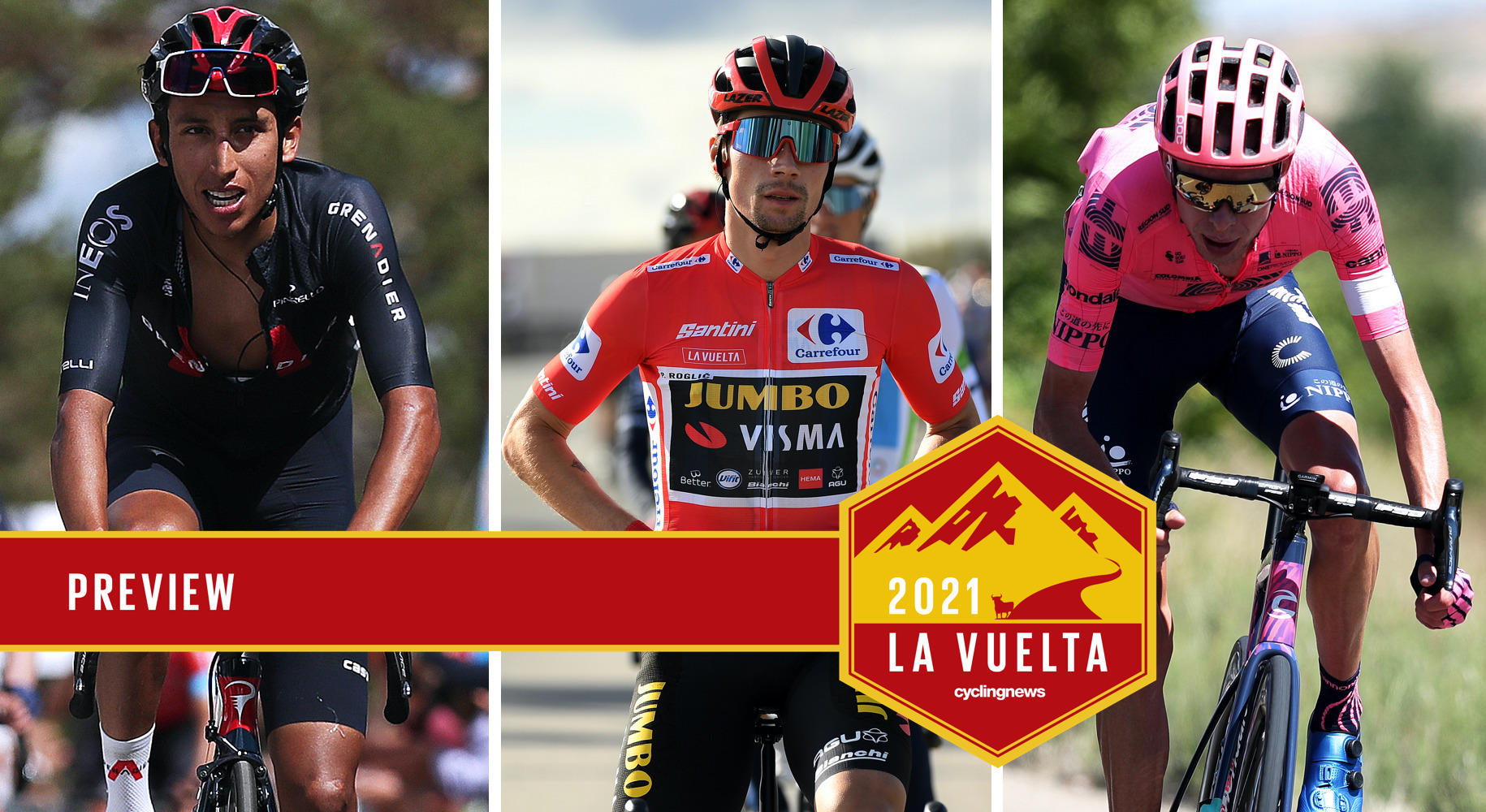Vuelta a España hits high mountains with a vengeance at Picón Blanco - Preview
Significant time gaps expected on first of nine summit finishes

After a time trial on Saturday and a day seemingly designed for the bunch sprinters on Sunday, the Vuelta a España ends its opening trio of stages in the province of Burgos on Monday with its first major test of the GC favourites, on the brutally difficult summit finish slopes of Picón Blanco.
Since 2017 the 7.6-kilometre ascent with a fearsomely high average gradient of 9.3 per cent has appeared regularly in the Vuelta a Burgos but it is unprecedented in the Vuelta a España. Given its toughness, though, it’s fair to assume many of the contenders here would have preferred that the Grand Tour organisers had given Picón Blanco a miss this year, too.
There have been plenty of summit finishes in the Vuelta’s first week in the past, of course. But to find a first-week summit finish as hard as Picón Blanco you’d have to go back to 2018, when the race had La Covatilla as its last challenge on stage 9.
In comparison, Picón Blanco comes nearly a week earlier in the 2021 race, making its ascent a very different kind of challenge to the wind blasted ascent to La Covatilla in western Spain where Ben King took his second solo triumph in six days.
But for all many GC riders will still be finding their sea legs for the Vuelta on Monday, a hefty proportion at least will be familiar with Picón Blanco from the most recent edition of the Vuelta a Burgos. A scant two weeks ago in fact, Picón Blanco was tackled at the end of the Vuelta a Burgos stage 3, prior to a headlong descent looping back to the small town of Espinosa de los Monteros.
It is hard to predict, given how early it comes in the 2021 Vuelta, how much damage Picón Blanco will cause. The heat, for one thing, will no longer be a factor, Temperatures are expected to be much lower than over the sunbaked Burgos opening weekend, and although preceded by the short, steady Alto de Bocos, Picón Blanco is the only major climb of the day.
However, at 202.8 kilometres, stage 3 is the second longest of the entire 2021 Vuelta, and on its exposed early sections as the race heads north across the Burgos moorlands, crosswinds could easily have played havoc with the race should any team be minded to try their luck at splitting the peloton.
Get The Leadout Newsletter
The latest race content, interviews, features, reviews and expert buying guides, direct to your inbox!
Whether still complete or in pieces, all of the Vuelta a España peloton will obligatorily pass through the town of Espinosa de los Monteros at the foot of the Picón Blanco, with the first, easiest part of the ascent in its outlying streets. Almost as soon as it leaves the town though, the climb narrows between drystone walls, steepening notably as it does so and for good measure switching from a smoother surface to a more gravelly, puncture-inducing variety of tarmac.
Very exposed early on, the mountain road subsequently passes through a mixture of scrubby pinewoods and then rough moorland again, before hitting the first of its steepest mid-climb segments, a pitch of 18 per cent, roughly half way up.
Once the climb finally leaves the woodland behind, with around four kilometres to go, though, there are far fewer changes of gradient, just a long, almost completely straight uphill drag at around 10 or 11 per cent reaching up towards the finish, where the big attacks will surely come.
A series of wind carbines just beyond the summit are a stark reminder of how bleak and exposed the last part of the climb will be. Two years ago, in fact, some dramatic Youtube footage emerged of the weather at the Vuelta a Burgos of riders having to dismount post-stage and walk downhill to the team buses in the teeth of a ferocious gale.
On the way up on Monday, regardless of which way or how strong the wind blows, the final kilometre with its two near-hairpin bends in quick succession will prove slightly smoother going. But after six kilometres of almost unrelenting steepness, this last series of ramps could see numerous riders in trouble, too.
Those riders who showed strongly ten days ago on Picón Blanco during the Vuelta a Burgos include stage winner Romain Bardet (DSM), of course, as well as Fabio Aru (Qhubeka NextHash), who attacked repeatedly. Mikel Landa (Bahrain Victorious), already a former winner on Picón Blanco in Burgos, finished third, while MIguel Angel López (Movistar) team, also triumphed there in 2018.
It’s indicative of how much damage Picón Blanco could inflict today if we look at the results from the last finish there in in Burgos in 2020. Between stage winner Remco Evenepoel (Deceuninck-Quick Step) and the rider placing 20th, on a stage with a very similar amount of climbing, the gaps reached a sizeable two and a half minutes. That sort of margin so early in the Vuelta would not be conclusive, but it would constitute a major blow to at least some contenders chances of victory in Santiago de Compostela, still nearly a full three weeks away.
Alasdair Fotheringham has been reporting on cycling since 1991. He has covered every Tour de France since 1992 bar one, as well as numerous other bike races of all shapes and sizes, ranging from the Olympic Games in 2008 to the now sadly defunct Subida a Urkiola hill climb in Spain. As well as working for Cyclingnews, he has also written for The Independent, The Guardian, ProCycling, The Express and Reuters.
